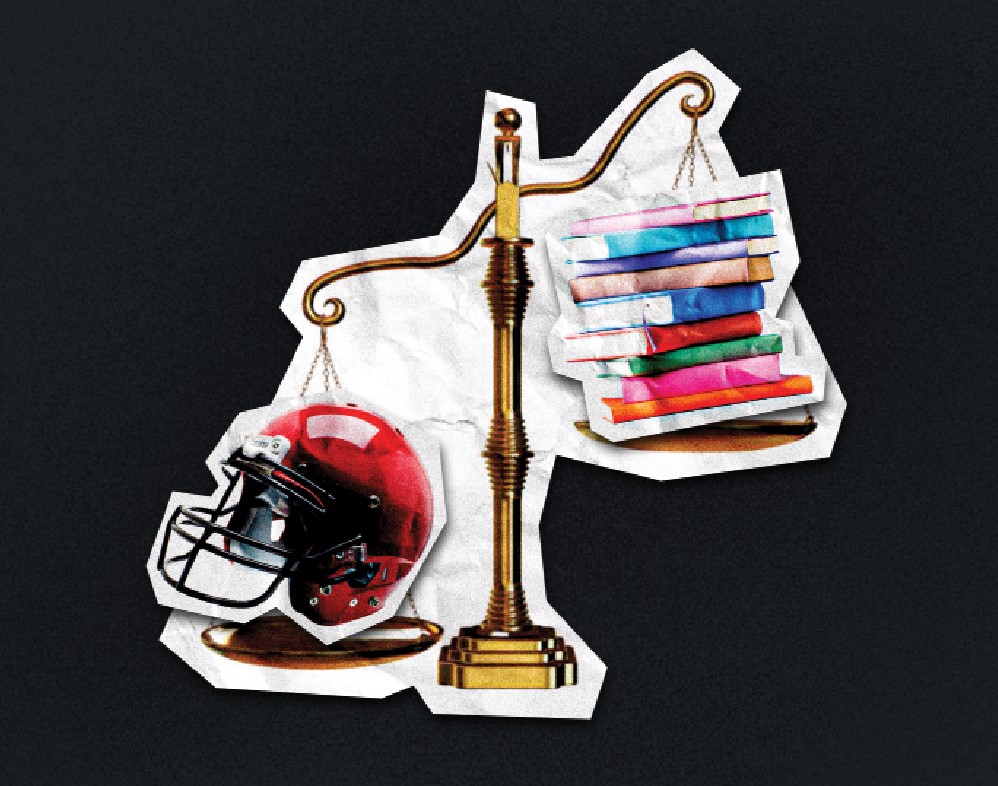He places first in track.
He achieves all A’s.
He has founded clubs.
He has played in Carnegie Hall.
He is — the whole boy.
The concept of educating the “whole boy” draws inspiration from the Renaissance period, specifically the ideal of the Renaissance Man, who is adept in the arts, sciences and anything else that piqued his interest. This educational standard, rather nebulously, encourages student growth across a number of fields ranging from athletics to fine arts and foreign language — aiming to cater to every aspect of the aptly-called “whole” boy.
While this approach holds merit, especially within the context of the wider world, its implementation leaves much to be desired.
In an ideal world, time wouldn’t be a constraint, allowing students to seamlessly balance hours dedicated to foreign languages, studying, athletics, fine arts and a myriad of clubs and extracurricular activities, all while getting adequate sleep to maintain their health. But like the Vitruvian man, this schedule often only exists as a theoretical concept rather than a practical reality.
In the practical world, everything has a trade-off. Time spent studying is time that could have been spent exercising or networking or sleeping. This concept is known as opportunity cost and severely limits the extent to which the “whole boy” can be achieved.
Within the real world, the idea of the “whole boy” is rendered impossible by the frequent demands of daily schedules. Each choice made to enhance one area of development invariably impacts another, creating a constant balancing act for students.
Beyond the logistical challenges, the school itself inadvertently sets barriers for students. One of the most glaring issues is the frequent scheduling conflicts among various extracurriculars such as robotics, athletics, fine arts, journalism and regular schoolwork, which often overlap and compete for students’ time. During the Independent Schools Association of the Southwest (ISAS) fine arts festival, varsity games were held, thus putting pressure on students to either play or attend the fine arts festival. Considering the festival only takes place for three days, it could be possible to schedule games outside this period.
Additionally, during spring break, many students were discouraged from travelling with family to attend to both academic and athletic events. While these activities are incredibly important to growing into a well-rounded man, the school should help facilitate time for students to rest and spend time with family. Better communication between students, coaches, teachers and administrators regarding important events could better avoid making these scheduling conflicts and allow breaks to be more of a true break and offer respite from the rigorous workload.
The school’s commendable efforts to educate the “whole boy” could be further enhanced with some minor policy tweaks that allow students greater freedom to pursue their interests. Still, it’s important to acknowledge that a certain degree of pressure is not only inevitable but also beneficial.
This level of challenge serves as an important experience, helping students to prioritize their commitments and manage their time effectively. These are crucial skills that will serve them well beyond their school years and into adulthood. While in college, students often have to choose between studying or pursuing extracurriculars. By refining the balance between reducing unnecessary burdens and maintaining constructive stress, the school can better prepare students to navigate the complexities of life with resilience and adaptability.
Navigating the challenges of educating the “whole boy”
Students have to juggle schoolwork, extracurriculars, sports and fine arts, while still trying to save time for family and friends.
April 19, 2024
Categories:
FINDING BALANCE Students often face challenges to balancing school work, extracurriculars and fine arts, which inhibit the pursuit of the “whole” boy ideal.
More to Discover
About the Contributor
Aaron Augustine, Former Editorials Editor






